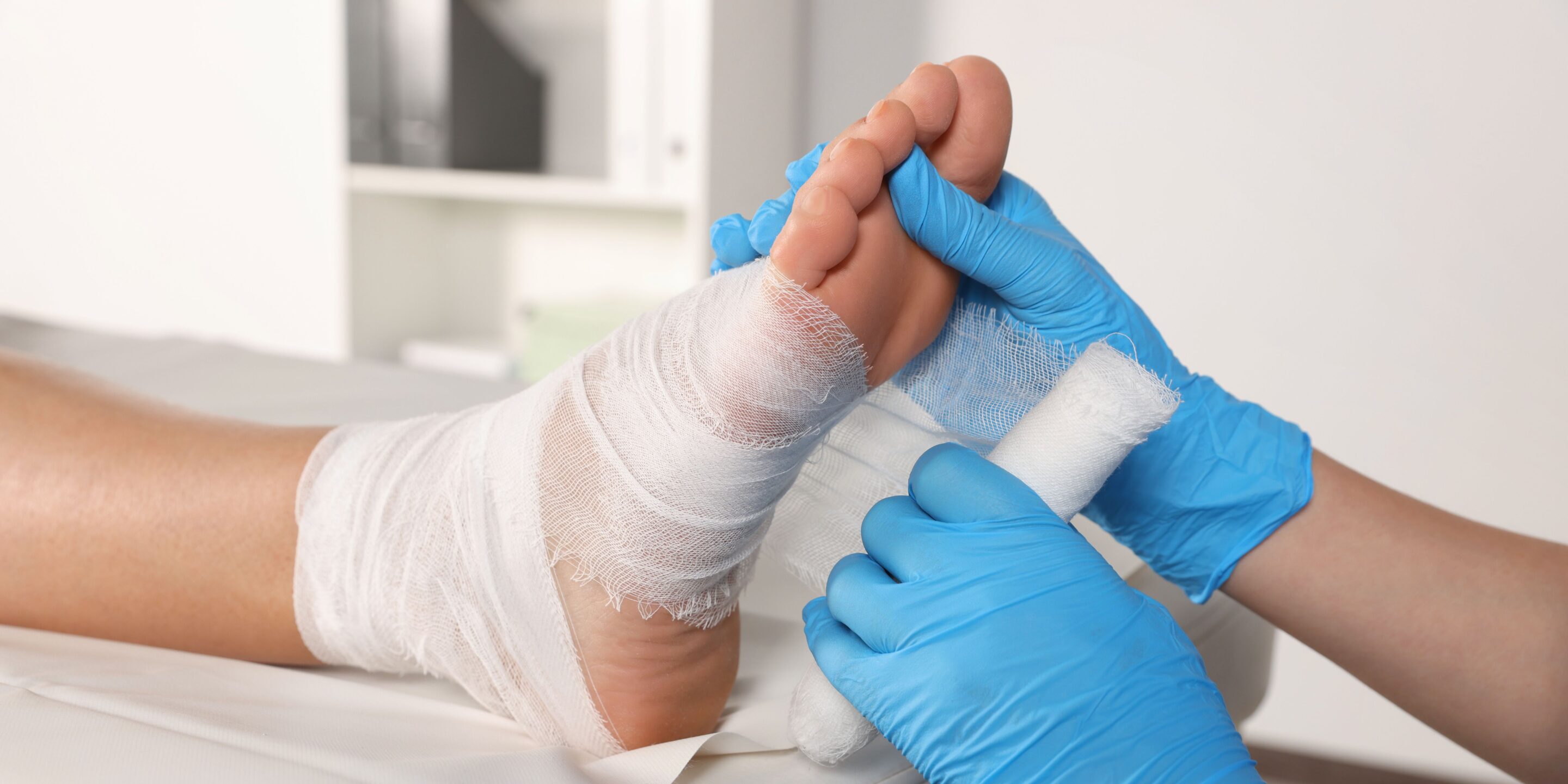Diabetic Wound Care
Living with diabetes requires a multifaceted approach to healthcare, with one of the most pressing concerns being the management of wounds.Diabetic Wounds, if not attended to promptly and effectively, can lead to serious complications, impacting the overall well-being of individuals. This comprehensive guide aims to provide an in-depth exploration of various facets of diabetic wound care, including the types of diabetic wounds, treatment options for each, the importance of early detection, and the significance of regular preventative visits.
Types of Diabetic Wounds
Diabetes, a chronic metabolic disorder, can affect multiple organ systems, leading to various types of wounds. Understanding the specific nature of these wounds is crucial for implementing effective care strategies. Here are the primary types:
Neuropathic Ulcers
Resulting from nerve damage, neuropathic ulcers are commonly found on the feet. What makes them particularly challenging is the lack of pain sensation, as individuals with diabetes may not feel discomfort. This often leads to delayed detection, allowing the wound to progress. Prevention and management strategies involve regular foot inspections, meticulous hygiene practices, and the use of specialized footwear to offload pressure from affected areas.
Ischemic Ulcers
Poor blood circulation, a common complication of diabetes, can result in ischemic ulcers. Typically appearing on the lower extremities, these wounds are slow to heal due to reduced blood flow to the affected areas. Treatment includes medications to improve blood circulation, wound debridement to remove necrotic tissue, and compression therapy to enhance blood flow and facilitate healing.
Infections
Individuals with diabetes are more susceptible to infections, and even minor wounds can escalate rapidly. The compromised immune system and impaired blood flow contribute to the increased risk. Immediate antibiotic treatment, thorough wound debridement to eliminate infected tissue, and close monitoring are essential for managing infections effectively.
Treatment Options for Each Type
Neuropathic Ulcers
- Regular foot inspections: Individuals should examine their feet daily for any signs of redness, swelling, or changes in skin color.
- Meticulous hygiene practices: Keeping the feet clean and dry is crucial to prevent infections.
- Specialized footwear: Shoes designed for individuals with diabetes can help redistribute pressure, reducing the risk of ulcer formation.
- Wound cleaning, debridement, and dressing: Timely cleaning and dressing of wounds are essential to prevent infection and promote healing.
- Topical medications: Application of medications, such as antimicrobial or growth-promoting agents, can facilitate the healing process.
Ischemic Ulcers
- Medications and lifestyle modifications: Interventions aimed at improving blood circulation may include medications and lifestyle changes, such as exercise and a heart-healthy diet.
- Wound debridement: Removal of necrotic tissue through debridement procedures is crucial for encouraging the healing process.
- Compression therapy: Compression garments or bandages help enhance blood flow to the affected areas, promoting healing.
Infections
- Antibiotic treatment: Prompt administration of appropriate antibiotics is essential to control and eliminate infections.
- Thorough wound debridement: Removal of infected tissue is crucial to prevent the spread of the infection.
- Close monitoring and follow-up care: Regular check-ups with healthcare professionals ensure that the infection is adequately addressed, and the treatment plan is adjusted if needed.
Early Detection
Early detection is a cornerstone of diabetic wound care. Given the potential lack of pain sensation in neuropathic ulcers, individuals must be proactive in monitoring for any signs of trouble. Regular self-examinations, especially focused on the feet, are paramount. Any deviations from the norm, such as redness, swelling, or unusual warmth, should trigger immediate attention. In the absence of pain, heightened vigilance becomes the first line of defense against the progression of wounds.
Preventative Visits
Scheduled preventative visits to healthcare providers are pivotal for managing diabetic wounds effectively. These visits serve as opportunities for comprehensive assessments of overall health and the early identification of potential issues. Regular check-ups, blood pressure monitoring, and screenings for neuropathy and vascular complications are integral components of preventative care, fostering a holistic approach to diabetes management. The proactive nature of these visits enables healthcare professionals to intervene early, minimizing the risk of complications associated with diabetic wounds.
Conclusion
In conclusion, diabetic wound care demands a proactive, comprehensive, and individualized approach. Understanding the nuances of different types of wounds, being aware of the corresponding treatment options, prioritizing early detection, and engaging in regular preventative visits are integral to effective diabetes management. By embracing a multifaceted strategy that combines self-care, professional intervention, and preventative measures, individuals with diabetes can minimize the risks associated with wounds, promoting better health outcomes and an improved quality of life.
Proper Wound Care Starts Now
While untreated wounds can have devastating consequences on one’s mobility and health, the good news is that these outcomes are almost always avoidable through early detection and preventative care.
Let Advanced Ankle & Foot be your partners in comprehensive wound care – both in direct treatment and in preventing wounds from occurring in the first place. Schedule an appointment by calling our offices or by filling out our online contact form.

